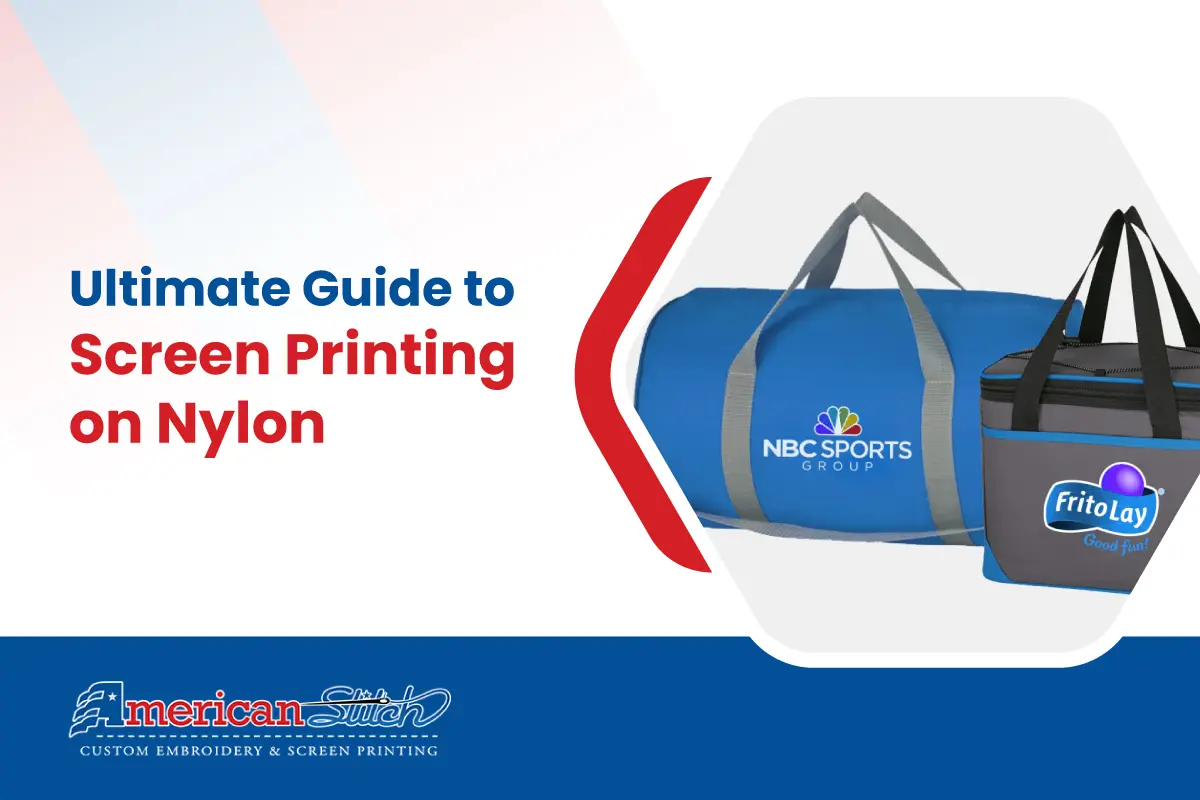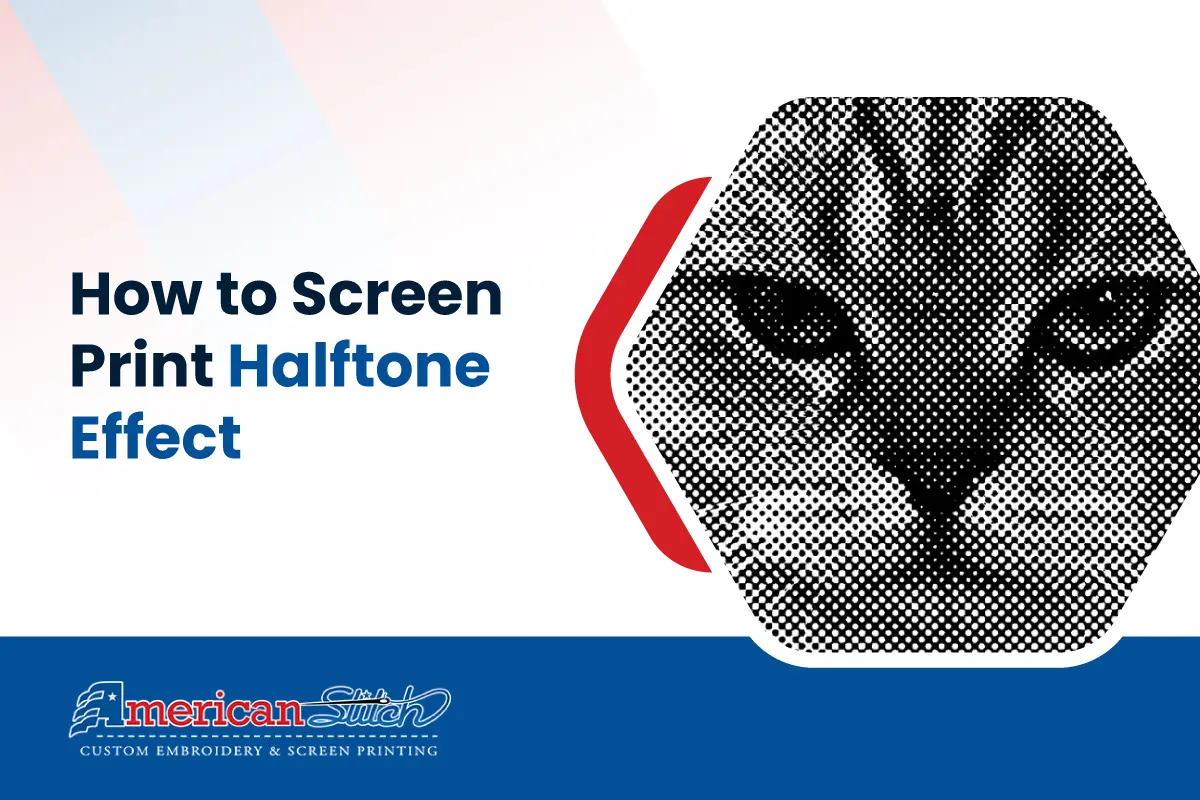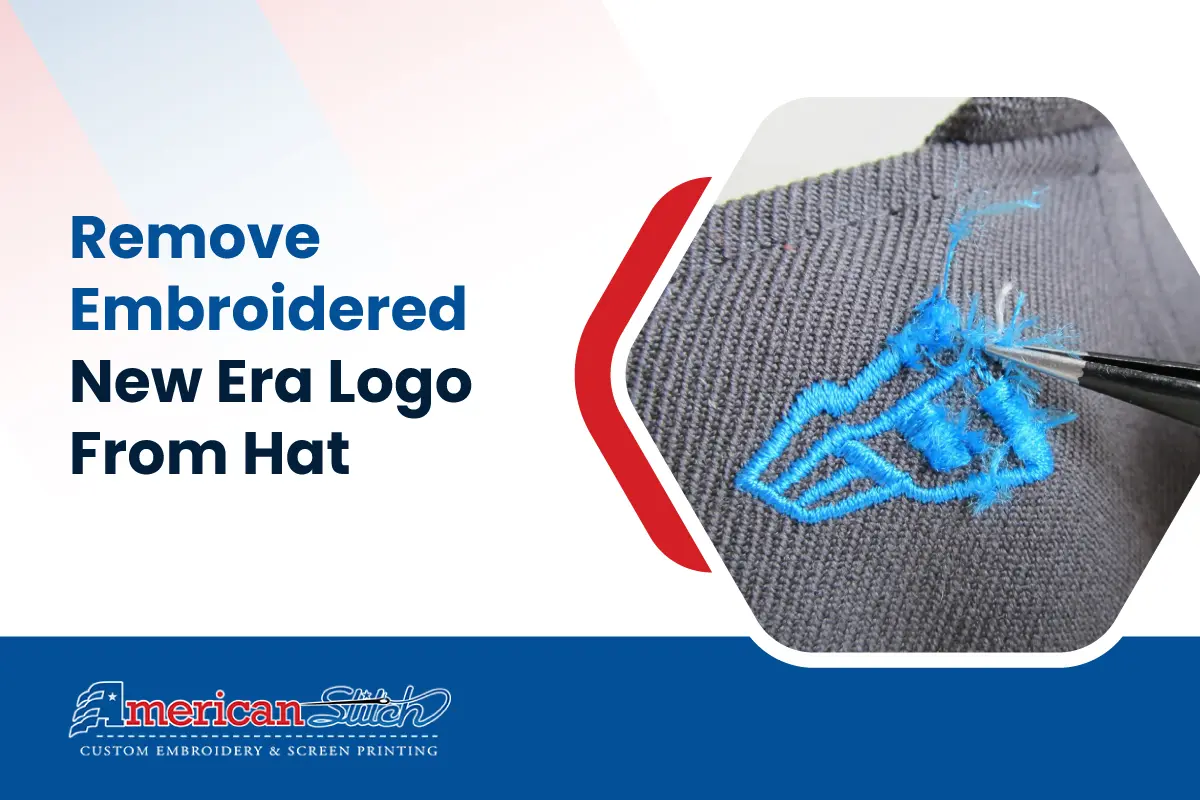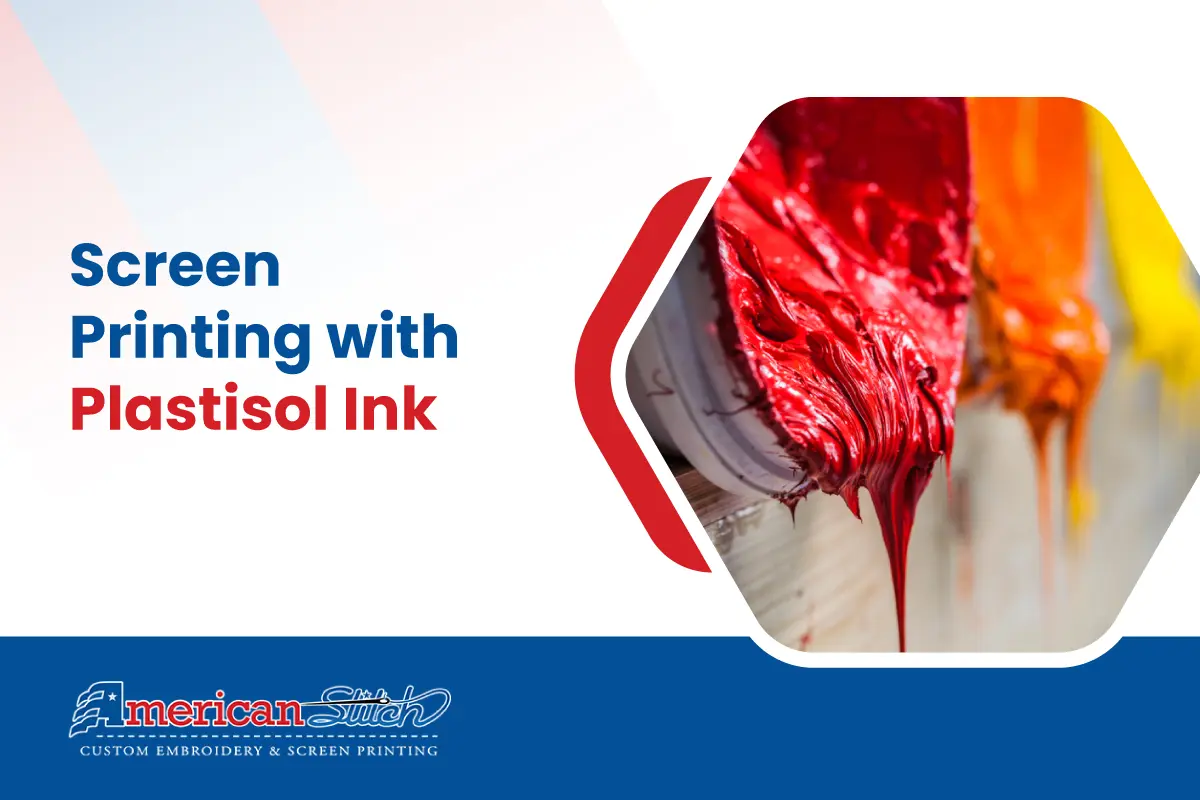Screen printing nylon is not only a matter of technical ability but also an opportunity to produce sportswear, promotional products, outdoor apparel, and much more. Considering how standard nylon is as a material for solid and weather-resistant products, expanding your knowledge and capabilities to include this versatile printing method will open up new possibilities for your art and your business.
From custom-screened jerseys for your local Little League team to promotional products for your corporate clients, understanding nylon will ensure you create luminous, enduring prints that will capture and hold your customers’ attention in the marketplace.
This guide to screen printing nylon provides helpful insights and proven techniques for producing outstanding prints like the pros. We’ll look at what nylon is and is not, key preparation steps, best screen printing practices, curing options, potential issues and solutions, and successful applications to inspire your next custom order.
Table of Contents
What Is Nylon?
Nylon is a man-made thermoplastic polymer developed by DuPont in 1935. It is considered to be one of the greatest inventions to the textile world because of its superior properties such as high strength, abrasion resistance, elasticity and chemical resistance. Nylon is used in many forms and applications from apparel, furniture and carpets to industrial parts and consumer products.
Properties of Nylon
- Durability: With its very high tensile strength, nylon is often used in long-wear products.
- Flexibility: Nylon fabric has good stretch and recovery properties useful in active and sport apparel.
- Moisture Resistance: A nylon fabric will not absorb moisture and dries quickly. It will also retain its shape and color when exposed to heat. This makes nylon ideal for outdoor products.
- Chemical Resistance: Exposure to chemicals does not affect it which is helpful for industrial uses.
Common Uses of Nylon
- Clothing: Nylon’s stretchability and strength are commonly utilized in athletic apparel, stockings, bathing suits, and lingerie.
- Outdoor Equipment: The weather resistant and high strength properties of nylon make it a common choice for materials like tents, backpacks, and rope.
- Industrial Parts: The mechanical properties and durability of nylon make it ideal for use in automotive parts, machinery, and electric wires and cables.
What Is Required to Printing on Nylon?
There are special tools, materials and pre-treatment processes required to achieve good results when printing on nylon. Here’s what you’ll need:
Materials and Tools
- Nylon Fabric: Select the correct nylon fabric for your application taking into account thickness, finish and colour.
- Inks: Inks required are specialized inks such as solvent based or water based inks for synthetic fabrics.
- Screens and Mesh: Screens with appropriate mesh count to suite the detail and ink being used.
Is Nylon Hard to Print?
While not the easiest material to print on, nylon can produce fantastic results if prepared for and printed using the correct techniques.
Challenges
- Ink Adhesion: The non porous and smooth surface of nylon sometimes makes it hard for ink to adhere to the fabric, causing issues such as peeling or flaking.
- Heat Sensitivity: High temperatures cause nylon to shrink and distort. Care needs to be taken during the curing process.
- Flexibility and Stretch: Stretch nylon fabrics need inks and techniques that allow the fabric to move and stretch without the print cracking.
Solutions
- Use Appropriate Inks: Inks developed for synthetic fabrics adhere best to nylon.
- Proper Curing: curing techniques that apply consistent heat to the print without over curing. Infrared curing and using a heat press with controlled temperature and time are good options.
- Stretchable Inks: For stretch fabrics, inks need to be flexible after curing to avoid cracking and flaking, and allow the print to move with the fabric as it stretches and returns to its original form.
Best Types of Nylon Weaves
There are several types of nylon weaves, but for the purpose of quality screen printing, here is a quick glance at the best:
- Plain Weave: Most popular, smooth and consistent surface for fine detailed printing.
- Ripstop Weave: Grid style pattern for strength and additional tear resistance (think outdoor applications).
- Taffeta Weave: Also smooth, with a bit of sheen for a light and fancy clothing and lining finish.
- Oxford Weave: Basket-weave style pattern for added texture and strength (think bags and heavy wear).
Best Screen Printing Tools for Nylon
What are the best screen printing tools for printing on nylon fabric? Learn about the most effective and dependable tools to use for long-lasting and vibrant screen print jobs on nylon fabric. We’ll cover the best screens, inks, pre-treatment, drawdown, and curing tools to help you get started with your next screen printing job on nylon.
1. Screens and Mesh Count
- Screens: Use long-lasting, high-quality polyester or stainless steel screens.
- Mesh Count: A mesh count ranging from 110 through 160 is optimal for printing on nylon.
2. Inks
- Solvent-Based Inks: These inks are engineered to bond efficiently to the smooth fiber of nylon yielding rich colors and long lasting results.
- Water-Based Inks: Special formulated water based inks for synthetic fibers are eco-friendly and great for achieving a softer hand.
- Plastisol Inks: Probably the most widely used inks for screen printing on nylon, they offer the greatest versatility and durability and produce high opacity and rich colors on virtually any fabric including nylon.
3. Pre-Treatment Products
- Adhesion Promoters: Increase ink bond to the surface of nylon for all over durability.
- Heat-Setting Sprays: Assist in ink absorption and durability for water-based and plastisol inks.
4. Emulsions
- Diazo Emulsions: Inexpensive and versatile, works well with a full array of inks. Photopolymer
- Emulsions: Fast exposure times and good detail reproduction.
- Dual-Cure Emulsions: High durability and resolution, the best of both diazo and photopolymer.
6. Curing Equipment
- Heat Press: Plastisol and some water-based inks need the exert pressure and heat of a heat-press to adequately bond to the nylon fabric.
- Conveyor Dryer: For high volume operations, a conveyor dryer uses controlled heat and air-flow to cure the printed material.
- Infrared Curing Units: Controlled and quick curing, perfect for intricate printing and the highest quality standards.
7. What Software Do I Use?
- Adobe Illustrator: The industry standard for creating detailed and scalable vector designs.
- CorelDRAW: Easy to use with solid design and artwork preparation features.
- Affinity Designer: An affordable alternative to Illustrator with powerful vector and raster editors.
8. Cleaning and Maintenance Products
- Screen Cleaners: Clear ink and emulsion from your screens to keep them in pristine working conditions.
- Degreasers: Used to clean the fabric prior to printing, increasing the adhesion of the ink.
- Emulsion Removers: Wash away the emulsion from your screen to prepare for new art.
Screen Print on Nylon Preparation
All right, enough with the introductions, let’s get to screen printing on nylon. Here are some guidelines on screen print on nylon preparation:
Screen printing, like any other printing techniques, requires preparation to achieve maximum results. When preparing to screen print on nylon, consider the following guidelines:
1. Choose your fabric
Of course, the first and most important thing when it comes to screen printing on nylon is to choose your fabric. You need to get a good quality nylon fabric that is defect-free and is smooth (no imperfections). The fabric should also be clean and clear of any foreign matter that might interfere with the adhesion of the ink.
2. Treat the fabric
The nylon fabric needs to be pre-treated to improve ink adhesion and ensure print durability. Adhesion promoters or heat-setting sprays can be applied to the surface of the fabric. These products form a tacky, three-dimensional film on the fabric surface that allows the ink to adhere better when printing.
3. Prepare your screen
Get your screens ready by exposing them with the right emulsion. Let them dry completely. Make sure that your screens are well tensioned for a consistent print. Of course, exposing your screens with the right design will ensure a sharp and accurate print.
4. Choose the appropriate ink
When printing on nylon fabric, you should select ink according to the color requirement and printing performance. Generally, the solvent-based ink has good adhesion and long-lasting weathering on the nylon fabric. Depending on the ink formulation, water-based ink can also be printed on nylon fabric.
5. Design files ready
Design files are usually created in vector graphics software like Adobe Illustrator or CorelDRAW. Check the size and placement of your image relative to the repeatable area of the fabric. Other than that, you need to think about things like color breaks and printable registration marks if you are going with multiple colors.
6. Prepare your workspace
Your screen printing setup should be in an area with good ventilation and proper lighting. Make sure your equipment is clean and in good working order. Setup your space so that the workflow is as efficient as possible and to avoid any mistakes or accidents.
7. Test
Test printing onto scraps of fabric before printing on the actual nylon fabric. This allows you to adjust your settings and ensure print quality before you commit to the final product. Things like ink viscosity, screen tension, exposure and development time, and curing temperature under different light sources are some of the things to watch and adjust for the best results.
8. Finally, it’s time to print
When you are ready, start printing on your final fabric! When you place the fabric on the screen printing surface, make sure it is held firmly in place to prevent any movement or slipping during the print process. Apply the ink with even pressure and a consistent speed, ensuring good ink coverage and crisp artwork.
9. Cure
Finally, after you finished printing, you need to cure the ink to make sure it will last and be washable. There are many different types of ink, and each has specific curing requirements. Some inks may require heat from a heat press, conveyor dryers, or infrared dryers. Cure the fabric according to the ink manufacturer’s recommendations for time and temperature.
10. Finishing
After the ink is cured, it’s time to remove the fabric from the heat press or dryer. Always let the fabric cool down completely before touching or handling in any way. Once the fabric is cool, it’s good to examine the finished print.
Inspect each screen carefully for defects and imperfections. Touch up and/or re-print any areas that may need it. At last, you may wash the printed fabric following the manufacturer’s guidelines to ensure the removal of any ink chemicals or contaminants.
What Is The Best Way to Print on Nylon?
Nylon fabrics are widely used for many applications. The fabric itself offers many advantages like other performance fabrics; strength, durability and versatility. But printing on nylon is not always an easy task as it behaves differently than other fabrics. So what is the best way to print on nylon? Which ink will stick and last on the fabric? How will you achieve great results with minimal effort?
1. Screen Printing
Screen printing, commonly referred to as silk screening, is perhaps the most common way to print on nylon fabric. Ink is forced through a mesh screen onto the fabric to create bright and permanent prints. Screen printing provides good ink absorption and color density on the substrate and is the best printing method for nylon because of its smooth, non-absorbent nature.
Process
Screen printing involves coating a screen with photo-sensitive emulsion and exposing it to UV light with the desired design. The hardener in the emulsion hardens in the areas that are exposed, forming a stencil, while the uncured emulsion washes out. Ink is then pumped through the stencil onto the substrate with a squeegee to form the printed design.
Advantages
This method gives good ink opacity, color intensity and fastness on nylon fabric. Screen printing can be used for a wide variety of designs and is suitable for small or large volume production.
2. Heat Transfer Printing
Heat transfer printing is another popular method for printing on nylon fabric, especially for custom and personalized designs. This method involves transferring pre-printed designs onto the fabric using heat and pressure. Heat transfer printing is versatile and can produce detailed and full-color prints on nylon.
Process
Heat transfer printing involves printing the desired design onto transfer paper using specialized inkjet or sublimation printers. The printed design is then transferred onto the nylon fabric using a heat press machine. The heat and pressure activate the ink, causing it to bond with the fabric fibers.
Advantages
Heat transfer printing offers the flexibility to produce custom and full-color designs on nylon fabric. It requires minimal setup and is suitable for small-scale production or on-demand printing.
3. Dye Sublimation Printing
Dye sublimation printing is a printing technique where the dye is transferred onto nylon fabric through the process of pressure and heat. It offers excellent color saturation and permanent printing that gets absorbed into the fibers of the fabric.
Process
This is achieved by first printing the design or artwork onto transfer paper with a dye sublimation ink. Then, the transfer paper with the design is mounted onto the nylon fabric and passed through a heat press machine. The heat from the machine sublimates the dye from a solid state to a gas and gets absorbed into the fabric and gets bonded to the fiber.
Advantages
The result of using dye sublimation printing method on nylon fabric yields a high-quality printed products with excellent color saturation and durability. It also ensures high color fastness and is suitable for complex designs and photo images.
Curing and Post-Print Treatments
Printing on nylon and you’re wondering about curing and post print treatments? These two steps are equally as important as the preparation and inking process. Curing the ink on the fabric sets the ink. This means, that if done properly, it will not wash out or fade over time. Post print treatments help to further improve the looks and durability of the print. So, let’s take you on a quick curing and post print treatment guide for screen printing on nylon:
1. Curing
Curing involves the application of heat to the printed material to effectively “set” the ink. Proper curing will ensure the ink properly bonds with the nylon fibers to create a long lasting, washable and wear-resistant print.
How to Cure
- Heat Press
Using a heat press is a quick, simple and controlled way to cure your prints on nylon. It applies uniform heat and pressure to the back of the printed panel, ensuring consistent curing every time. Adjust the heat press to the appropriate temperature for the specific ink (usually around 320°F to 330°F for most plastisol inks) and hold it down for the recommended amount of time (typically 10-20 seconds).
- Conveyor Dryer
If you are looking to produce large quantities consistently, using a conveyor dryer is the most efficient way. As the printed panel moves through a long heated tunnel on a belt, it is exposed to intense heat from all across. A controlled environment ensures consistent curing every time. Adjust the belt speed and the temperature as per the recommendations of the ink manufacturer to get the best results.
- Infrared Curing Units
Infrared radiation is used to cure the ink in these curing units. Infrared curing units offer precise and quick curing that allows for detailed and high-quality printing. Adjust the curing temperature and the time of exposure as specified by the ink specifications.
Some Tips for Curing
- Make sure the entire image reaches the necessary temperature. This will prevent parts of your print from being under-cured.
- Monitor curing temperature with laser thermometer or temperature strips.
- Do not over-cure. Excessively high temperatures will damage nylon fabric or scorch the ink.
2. Post-Printing Treatments
Post-printing treatments are the final step to a successful screen printing job. When printing on nylon and other materials, these special treatments will increase the durability, look, and feel of your screen printed artwork. They also will protect your screen print from fading when washed, aged, or even degraded by the environment. Let’s take a look at some of the more popular post-printing treatments available:
Heat Setting
Once the printing and curing is complete, the garment can be heat set to further ensure the ink bonds with the nylon fabric. Heat setting applies heat to the printed area to improve ink fixation and washing fastness. Employ a heat press or domestic iron at the correct temperature for a few seconds.
Stretch Testing
After printing and curing, carry out a stretch test to validate the adhesion of the ink to the nylon fabric. The test involves gently stretching the printed panel to ensure the print exudes no cracking or peeling. If problems are encountered, alternatives in the curing process or ink development may be required.
Washing and Drying
Before a print is dispatched of any garment, it’s vital to test the washing fastness of the ink. Without such tests, a print may not withstand the rigors of washing and drying. The printed fabric should be washed as per the suggested garment care (normally in cold water and on a gentle cycle) with the observation for any fading, cracking or peeling of the print.
Coating and Sealants
Consider using a coating or post-printing sealant to help with the durability of the print. These products provide an extra layer on top of the ink that can help with abrasion, UV, wash, and overall appearance. Be sure to select a coating or sealant that’s compatible with the fabric and ink.
Quality Control
Develop a quality control process to review the finished prints for any abnormalities or inconsistencies. Review the prints for proper curing, ink adhesion, and overall appearance. Document any defects and make any necessary adjustments to the printing or curing processes to achieve the desired results.
Storage and Handling
Store the finished, cured, and treated prints in a manner that prevents them from being creased or rolled with any sharp objects that may damage the ink. Keep the printed fabric in a cool, dry location, away from direct sunlight and moisture. Also, be sure to handle the prints gently to prevent any stretching of the fabric that may compromise the adhesion of the ink.
Conclusion
Screen printing on nylon fabric can produce wonderful, rich, and long-lasting results when executed properly. It’s important to understand nylon’s unique characteristics and how to choose the right supplies and equipment to tackle the job. By preparing your fabric properly, selecting the right inks and screens, and taking the necessary time to cure properly and post-printing treat correctly you’ll be able to achieve professional quality prints that will last.
When it comes to printing t-shirts, the most popular choices are 100% cotton or a cotton blend. Full-prefix nylon shirts are less common, but a great option for those interested in exploring alternative fabric options. Printing on 100% nylon shirts is possible, but more challenging due to the fabric’s prefix properties. For those interested in learning more about printing on 100% nylon, check out our blog on printing on mesh fabrics.
Frequently Asked Questions
Can You Screen Print in Nylon?
Yes, you can screen print on nylon. However, it requires specific inks and techniques designed for synthetic fabrics to ensure good adhesion and durability.
How To Use a Mesh to Print on Nylon?
To use a mesh to print on nylon, follow these steps:
Choose a mesh screen with an appropriate thread count (typically 110-160 mesh count is suitable for nylon).
Apply an emulsion to the screen and let it dry.
Expose the screen with your desired design using a UV light source.
Wash out the unexposed emulsion to reveal your stencil.
Place the nylon fabric on a flat surface and secure it.
Position the screen over the fabric and apply the ink using a squeegee.
Cure the ink as recommended by the ink manufacturer to ensure proper adhesion.
Can You Use Speedball Ink on Nylon?
Speedball inks are generally not recommended for nylon as they are primarily designed for natural fabrics like cotton. For nylon, you should use inks specifically formulated for synthetic fabrics.
What Fabric is Not Good for Screen Printing?
Fabrics that are highly textured, stretchy, or have a lot of wrinkles are not ideal for screen printing. This includes fabrics like velvet, fleece, or highly elastic materials. These types of fabrics can make it difficult to achieve a consistent print.
What Is The Best Ink for Printing Nylon?
The best inks for printing on nylon are synthetic fabric inks or plastisol inks designed for use on synthetic materials. These inks provide good adhesion and flexibility to accommodate the properties of nylon.
Does Nylon Fabric Print Well?
Yes, nylon fabric can print well if the correct inks and techniques are used. Proper preparation and curing are essential to ensure that the print adheres well and remains durable.
How To Put a Logo on Nylon?
To put a logo on nylon:
Screen printing: Use the process described above.
Heat transfer: Print your logo on a heat transfer vinyl and use a heat press to apply it to the nylon fabric.
Embroidery: This method involves stitching the logo onto the nylon fabric and can be very durable.
What Is The Best Surface for Printing Nylon?
The best surface for printing on nylon is a smooth, flat surface. Ensuring the nylon is stretched taut and secured can help achieve a clean print.
Does Nylon Warp When Printing?
Nylon can warp when exposed to high heat or if not handled properly during the printing process. It is important to control the heat during the curing process to prevent warping.
How Do You Print Nylon Without Warping?
To print on nylon without warping:
Use low-temperature curing inks designed for synthetic fabrics.
Control the heat during the curing process, using lower temperatures and longer curing times if necessary.
Use a heat press with a Teflon sheet or silicone pad to evenly distribute heat.
Avoid excessive stretching of the fabric during printing to maintain its shape.




